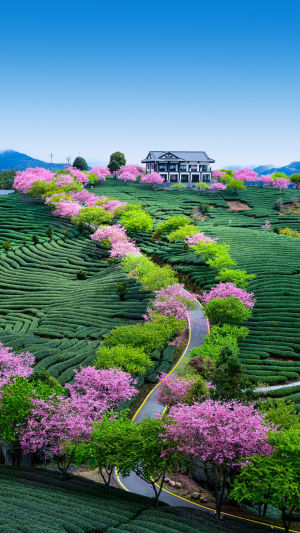In recent years, the blending of cultural tourism and tea culture has become increasingly popular in China. Since 2006, there have been nearly one hundred tea tourism towns established all over the country.
China, the homeland of tea, has had a long history of tea production, which has become a characteristic industry of the country.
Tea tasting and hospitality have been elegant entertainment and social activity among the Chinese people, with teahouses and tea parties being popular places for social gatherings. This cultural art, originating from the Chinese people, has been introduced to Japan, becoming the present-day Japanese tea ceremony culture.
The history of matcha can be said to be the history of Uji tea, as the highest quality matcha produced in Japan is Uji matcha. Tea was first cultivated in Japan during the early Kamakura period when Zen Master Eisai brought tea seeds back from China.
The seeds were later transferred to Fukase in Tsugao by Lord Akie of Takayama Temple in Tsugao, Kyoto. The area known as the birthplace of Japanese tea is Uji, Kyoto, which has developed as a representative of Japan's famous tea-producing areas due to its unique natural conditions.
Shizuoka Prefecture has been a famous tea-producing area since ancient times due to its terrain and climate conditions, which are suitable for cultivating tea trees.
After the opening of the port of Yokohama in 1859, tea became an essential export product of Japan, and more tea plantations were established in Shizuoka Prefecture. Makinohara City, Kakegawa City, Kikukawa, and Bagui area in Shizuoka Prefecture is the main tea-producing areas, with Makinohara Terrace having the largest tea plantation in Japan.
Many electric fans installed on electric light poles can be seen in the local tea plantations, which are designed to blow down the hot air from above in early spring to disperse the cold air so that the young tea buds do not freeze due to frost.
Located in the central part of Japan, between Tokyo and Osaka, Shizuoka Prefecture has a mild climate suitable for tourism in all seasons and is known for Mount Fuji and the Izu area. Mount Fuji, Izu, and green tea have become the three main attractions of Shizuoka tourism.
The area of tea plantations in the prefecture is nearly 300,000 mu, accounting for more than 42% of the tea plantations in Japan. 70% of the tea sales in Japan are conducted in Shizuoka Prefecture, and the major tea research institutes, tea machinery and equipment manufacturers, and large tea companies in Japan are also based in Shizuoka Prefecture.
After a long period of systematic heritage development, Shizuoka has become a mecca for tea culture tourism in Japan, with various old tea culture elements used in tourism development, revitalizing the traditional economy.
The so-called "tea meadow farming method" involves cutting and laying grass, leaves, etc., on the tea ridge, not only to make the tea ground receive better sunlight but also to improve soil fertility and moisture insulation capacity.
Nowadays, tourists visiting Shizuoka Tea Plantation can enjoy a full range of tea culture experiences. First of all, they can see the well-landscaped green tea plantations.
In addition to the scale of planting, Shizuoka pays special attention to the landscaping of planting, using mechanized planting and applying a uniform pattern to ensure the neatness and beauty of planting.
The beautiful tea fields have become the green base of Shizuoka, adding to the overall charm of the prefecture.





